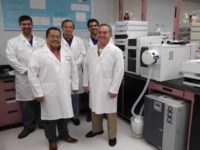EFSA Evaluates Molecular Typing Methods for Foodborne Pathogens

The European Food Safety Authority (EFSA) today published a scientific opinion paper, written by the agency's Panel on Biological Hazards (BIOHAZ), which reviews various molecular typing methods for the four major foodborne pathogens (Salmonella, Escherichia coli, Listeria and Campylobacter) and evaluates the effectiveness of those methods. One outcome of the BIOHAZ Panel's research is a recommendation that public health and veterinary authorities strengthen their cooperation on the use of molecular typing for foodborne pathogens.
The Panel assessed a number of laboratory techniques that enable the classification and comparison of strains of disease-causing bacteria to determine their effectiveness for:
- Detecting and identifying foodborne outbreaks;
- Estimating the contribution of various sources to foodborne illnesses;
- Predicting which strains of foodborne pathogens may potentially cause epidemics.
The opinion paper, entitled "Scientific Opinion on the evaluation of molecular typing methods for major food-borne microbiological hazards and their use for attribution modelling, outbreak investigation and scanning surveillance: Part 1 (evaluation of methods and applications)," may be downloaded here (PDF, 84 pages).
The Abstract for the paper follows:
An evaluation of molecular typing methods that can be applied to the foodborne pathogens Salmonella, Campylobacter, Shiga toxin-producing Escherichia coli and Listeria monocytogenes is presented. This evaluation is divided in two parts. Firstly, commonly used molecular typing methods are assessed against a set of predefined criteria relating to discriminatory capacity, reproducibility, repeatability and current or potential suitability for international harmonization. Secondly, the methods are evaluated for their appropriateness for use in different public health-related applications. These applications include outbreak detection and investigation, attribution modelling, the potential for early identification of foodborne strains with epidemic potential and the integration of the resulting data in risk assessment. The results of these evaluations provide updated insights into the use and potential for use of molecular characterization methods, including whole genome sequencing technologies, in microbial food safety. Recommendations are also made in order to encourage a holistic and structured approach to the use of molecular characterization methods for foodborne pathogens; in particular, on the importance of structured coordination at international level to help overcome current limitations in harmonization of data analysis and interpretation.
Looking for a reprint of this article?
From high-res PDFs to custom plaques, order your copy today!





